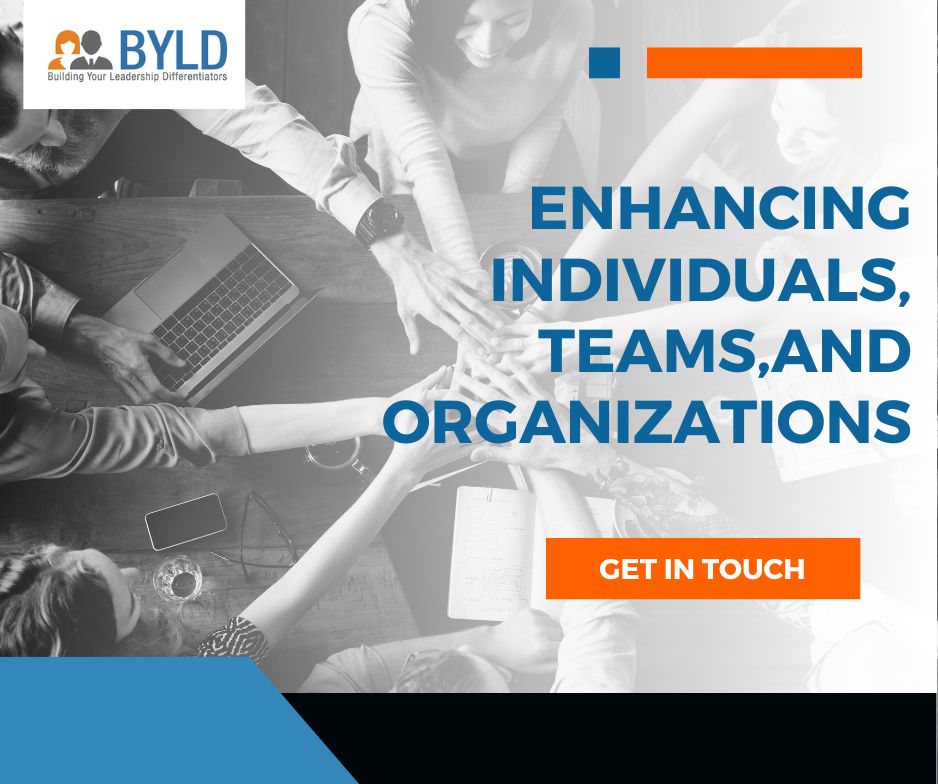
Corporate Team Building Games: Fun and Effective Ways to Improve Teamwork
- August 4, 2025

Article Content
Overview
The primary goal of such activities is to enhance social relations and define roles within teams, often involving collaborative tasks. Corporate Team Building Activities also work to improve workplace projects that involve teamwork because it helps the teams understand each other better. After completing team-building activities together, employees better understand each other’s strengths, weaknesses, and interests.
Thus, these Corporate team-building activities in the workplace help in creating a team that is cohesively working together towards a common goal. To create this cohesive team, each member must create bonds with one another. Fun activities that help people see each other in a different light allow them to connect in a different setting.
One of the most powerful reasons for Corporate Team Building is to get results. Through a series of planned team-building events that are fun and motivational, teams build skills like communication, planning, problem-solving, and conflict resolution. These team-building activity ideas help to facilitate long-term team building through fostering genuine connections, deeper discussions, and processing. A close-knit team will ensure productivity and a good work environment.
What Are Corporate Team Building Games? (Definition & Importance)
Corporate team building games are structured activities or exercises designed to foster collaboration, improve communication, and strengthen relationships among employees within a company. Such corporate team building games are usually played at workshops, off-site, or training sessions and might be creative exercises, physical challenges, or problem-solving exercises for the employees. Enhancing collaboration and fostering a more motivated and cohesive work atmosphere are the main objectives of corporate team building activities. Teamwork games for employees helps in improving employees communication skills, boost employee morale, and productivity, where employees learn to leverage each other’s strengths, leading to better cooperation in the workplace.
Here are Some of The Reasons to Start Team-Building, Motivate Your Team Members, and Bring Them Closer Together, Even in The Virtual Workplace:
1. Networking, socializing, and getting to know each other better
2. Teamwork and boosting team performance
3. Competition and bragging rights
4. Celebration, team spirit, fun, and motivation
5. Collaboration and the fostering of innovation and creativity
6. Communication and working better together
There are Three Types of Corporate Team Building Activities
1. Indoor activities
2. Outdoor games
3. Virtual games
The ultimate goal of all these kinds of games is the same. However, these games are played depending on the situation and setup. Currently, when the whole world has gone into remote work culture, it goes without saying that Virtual Team Building Activities are the flavor of the season, more so because there is no other option.
Benefits of Corporate Team Building Games
1. Improved Communication
One of the most immediate benefits of team building games is better communication among team members. Outside of official work structures, these activities often put individuals in unfamiliar environments where they may communicate freely and openly. Teamwork games for employees promote interaction and assist to break down obstacles to communication. The workplace becomes more cohesive when team members are aware of one another’s communication preferences. This reduces miscommunications, improves teamwork, and eventually results in more productive collaboration on business work.
2. Increased Trust and Collaboration
A strong team is built on trust. Corporate team building games allow employees to work together in a non-work environment, helping them connect on a more personal level. People naturally develop trust when they are aware of each other’s weaknesses and talents. As trust increases, collaboration also increases. Workers are more at ease asking for assistance, exchanging ideas, and working through problems as a team.
3. Enhanced Problem-Solving Skills
Many team-building activities are designed around challenges that require collective problem-solving. Whether it’s solving a puzzle, navigating an obstacle course, or completing a time-sensitive mission, these tasks demand critical thinking and teamwork. By practicing problem-solving in a fun environment, teams learn to approach real workplace issues more creatively and cooperatively. It’s a great way to sharpen individual and group decision-making skills.
4. Boosted Morale and Motivation
Nothing improves team spirit more than an enjoyable, stimulating activity that takes place outside of the typical workday. Team-building games have been shown to improve employee morale and leave them feeling refreshed and valued. A feeling of success is also increased by celebrating victories throughout these activities, whether they are individual or team-based. Frequent events provide employees with a sense of anticipation, which may boost morale, lessen burnout, and promote a healthy work atmosphere.
5. Reduced Conflict and Better Conflict Resolution
Stronger relationships built through team games often lead to fewer workplace conflicts. When team members understand each other’s personalities and strengths, it becomes easier to handle disagreements in a constructive manner. In case conflicts do arise, the camaraderie built during team-building sessions helps people approach resolution with empathy and mutual respect. This can be especially important in diverse teams or high-stress roles.
6. Increased Employee Engagement
Engaged employees are more productive, more loyal, and more invested in their roles. One of the key benefits of team building games is that they foster a sense of inclusion and belonging. When employees feel like valued members of a cohesive team, they naturally become more engaged in their work and committed to the company’s success. Moreover, giving employees opportunities to grow through challenges, show initiative, and have their voices heard further boosts overall engagement levels.
7. Identifying Strengths, Weaknesses, and Leadership Potential
Corporate team building games are also a subtle but effective way to observe individual strengths and team dynamics. Who takes the initiative? Who supports the group quietly but effectively? Who contributes original ideas to the discussion? These insights may be used by managers to identify future leaders, provide chances for growth, and assign responsibilities more strategically in the workplace.
8. Unleashing Creativity and Innovation
When people are placed in fun, novel situations like building a tower with limited materials or strategizing in a game, they often think outside the box. These activities spark creativity by encouraging people to experiment, innovate, and share unconventional ideas. This mindset can carry over to work-related brainstorming sessions, helping teams become more innovative in solving real business challenges.
9. Building a Stronger Company Culture
Company culture isn’t built through policies; it’s shaped through experiences. Team building games promote a culture of openness, mutual respect, and shared goals. They send a message that the organization cares about its people and values collaboration and growth. A strong, positive culture also makes it easier to attract and retain top talent, contributing to long-term business success.
10. Higher Productivity
All of the above corporate team building games helps in improving communication, more trust, improved problem-solving, and increased engagement contribute to one key outcome that is higher productivity. When teams are aligned, motivated, and working well together, they get more done in less time, with better results.
Read More – Types of Virtual Team Building Activities that Every Organization Should Use
Best Corporate Team Building Games
There are many best team building games for work. The top three are as follows:
1. Office Scavenger Hunt
Group size: 8-16 people
Purpose of activity: to work together to find an object
Time commitment: 20-30 minutes
A scavenger hunt is an excellent opportunity for new employess to explore the company (or conference room). The physical and factual parts of the office can be understood when hunts are well executed. For team-building, colleagues go in search of hidden facts and questions around the office. This can be achieved with a single team of co-workers. In larger organizations, groups or departments can compete against each other.
2. Play board games or puzzles
Group size: 8-20 people
Purpose of activity: to collaborate with members
Time commitment: 20-30 minutes
Office-friendly board games and jigsaw puzzles are a fun spin on collaboration. Colleagues may try out a variety of strategic games, icebreakers, and work problems. Typically, board games are made for smaller groups. You may need to divide the team into smaller groups, play many games, or come up with innovative rules if you have a large group.
3. Two truths and a lie
Group size: 5-8
Purpose of activity: to build familiarity between colleagues
Time commitment: 30 minutes
New recruits may struggle to navigate different personalities in the office. To ease into these interactions, companies can organize a game called Two Truths and a Lie, which is one of the best team-building games for work. This game requires participants to share two honest events and one lie. This can take place over an arranged break or during lunchtime. While gathered, each person presents the truths and lies. It is then up to the listeners to guess what may be true or false. Two Truths and a Lie is an easy game to break the ice between employees and their new colleague. They push colleagues to get personal, forming an easy bond.
What is Virtual Corporate Team Building
It is the ongoing process of bringing remote teams together. It will help your team achieve deeper bonds by creating a collaborative environment that is similar to an in-office setting. It is important because the physical distance of remote work can quickly turn into emotional distance, which in turn leads to isolation. And when your employees feel isolated, they will not be comfortable working alongside their fellow team members. That is why it is important to create a comfortable team environment that remote workers can rely on.
Virtual Corporate team-building efforts consist of several carefully designed strategies, games, and activities that are meant to bring more human interaction to virtual work. It will help your team connect, making them feel like they are part of a community. And, of course, a happier team leads to higher employee retention and productivity.
How to Choose the Right Team Building Game for Your Company
- Assess your team’s needs: Identify areas where your team needs improvement, such as communication, trust-building, problem-solving, or collaboration. Conduct surveys through interviews, or team assessments to gather insights into strengths and weaknesses.
- Consider team preferences: Consider your team members’ interests, preferences, and comfort levels. The more engaging and enjoyable the activities are for participants, the more effective they will be.
- Diversity in gaming activities: Include various activities to cater to different learning styles and personalities within the team. Some prefer outdoor physical activities, while others thrive in more reflective or creative settings.
- Budget: Consider the financial aspect and logistical feasibility of the activities. Ensure that the chosen activities fit your budget and can be easily organized without causing disruptions to regular work schedules.
- Encourage inclusivity: Choose activities that promotes inculsivty and equal participation. Avoid activities that may make some team members uncomfortable or exclude specific individuals.
Tips for Running Successful Team Building Games
- Set a Clear Objective- Establish what you want to achieve with the activity, be it improving communication, building trust, or simply helping the team unwind.
Know Your Team- Take into account the team’s size, preferences, energy levels, and dynamics. Choose activities that are inclusive and comfortable for everyone.
- Plan Thoroughly- Prepare all materials in advance, understand the rules, and consider how the activity fits into the overall schedule. Have a backup activity ready just in case.
- Keep Instructions Simple- Explain the game rules clearly and concisely. Avoid overly complicated games unless there’s ample time to explain and play.
- Be Mindful of Time- Time the activity well, avoid starting when the team is too tired or distracted. Keep the session short enough to maintain energy and interest.
- Foster Inclusivity- Ensure all team members feel comfortable participating. Avoid games that may put someone on the spot or create discomfort.
- Encourage Interaction- Mix up teams to help people connect across departments or roles. This promotes stronger internal relationships.
- Create a Safe and Positive Space- Focus on cooperation over competition. Encourage mutual respect and support rather than singling out winners or losers.
- Facilitate Reflection- After the activity, give space for a brief reflection on what was learned, how the team worked together, or any interesting takeaways.
- Adapt for Virtual Teams- For remote or hybrid teams, use online tools and select games that worked well for digital platforms. Ensure all participants are equally engaged regardless of location.
Read More – The Importance of Teamwork in Achieving Collective Goals
Conclusion
Corporate Team-building games are an essential part of company culture, where various fun activities are undertaken to bring the team members closer and bond better, ultimately leading to enhanced productivity.
When implemented thoughtfully and consistently, these games can transform your workplace dynamics, creating a more motivated, aligned, and cohesive team. So, invest in the right team of activities such as indoor, outdoor, or virtual, and see how your team flourishes as a cohesive one working toward shared objectives rather than simply as colleagues.





